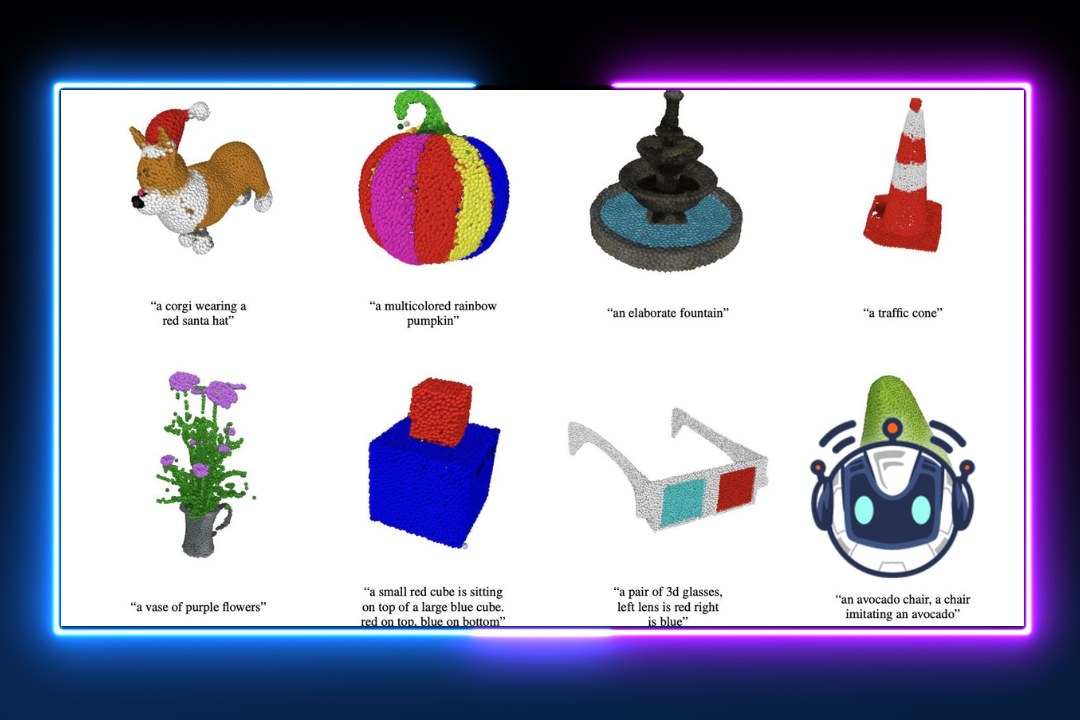OpenAI Releases Point E, an AI That Generates 3D Models in Seconds
OpenAI has released Point E, an AI that generates 3D models in a matter of seconds. This technology is particularly useful for generating complex and detailed terrain maps. It has been able to create a map of the Great Wall of China faster than Google’s DreamFusion, a popular algorithm that has been used to generate 3D maps in the past. As a result, it could lead to improvements in the quality of 3D maps, according to the company.
Text-to-image diffusion model
Point E is an OpenAI project that generates 3D images from text. The system is composed of two neural networks, which are based on a machine learning technique called diffusion.
First, a low-resolution point cloud is created, and then a finer one is generated based on that. In between these steps, the model uses two diffusion models that each have over 700 million parameters.
The image-to-3D portion of the process uses a fine-tuned version of GLIDE, a model that was trained on labeled images. It takes the image input as conditioning and then performs a series of augmentations and reversals on that input to create the point cloud.
Another part of the process uses an upscaler that increases the resolution of the point cloud by adding 3,000 pixels. This step only uses 5% of the fine-tuning data set.
Finally, the output is embedded through a pre-trained CLIP model. This provides a score for the accuracy of the images, based on how close they are to the caption.
Converting clouds into meshes
A new open source machine learning system called Point E has been released by the company OpenAI. It produces 3D models using text prompts. The model has been tested against several competing systems and is said to be twice as fast as the competition.
The OpenAI Point E project has been open sourced on Github. The system is designed to create point clouds and meshes from images, text, and data sets. This process is intended to be faster, simpler, and more efficient than the current state of the art.
Point E is composed of two models: a text-to-image model and an image-to-mesh model. In the text-to-image model, the Point E AI learns how to associate a text prompt with visual concepts. In the image-to-mesh model, the Point E AI converts point cloud data into polygon meshes.
The Point-E system can generate three-dimensional models in one to two minutes, which is a major improvement over previous state-of-the-art. However, the quality of the generated models is not yet up to par. Some models are broken, missing, or distorted.
Faster than Google’s DreamFusion
OpenAI’s new Point E is a machine learning system that generates 3D objects from text. Using a few algorithms, the system can generate a variety of objects for game production, animation, and more. It uses one Nvidia V100 GPU and can produce 3D models in one to two minutes.
Besides being faster than Google’s DreamFusion tool, Point-E is also more efficient. This is because it uses a smaller set of paired data for training. Instead of relying on millions of paired 3D assets, it relies on a few labeled images.
Point-E produces a remarkably fine 4,096 point cloud model. That’s orders of magnitude more points than the smallest point cloud.
Although Point-E is much faster than Google’s DreamFusion, it’s not as precise as its rivals. For example, it doesn’t yet have the capacity to accurately generate a fine-grained object. Also, it may have some difficulty understanding how to correctly translate an image from a text-to-image model.
Bias in model-synthesizing AI
If we want to create models that are free of bias, we need to be aware of the various factors that can contribute to bias. Bias is a type of systematic error in a computer system that can result from coding, data collection, or selection.
Some of the most common sources of bias in AI systems include inadequate data collection, data source variability, and a lack of reproducibility. These are all risks that must be mitigated when developing an AI-based system.
In addition, the reliance on AI can create a false sense of objectivity. The emergence of bias can exacerbate existing health disparities.
In order to prevent bias from occurring, it is essential to develop AI tools that are designed for maximum generalization. This means that they should incorporate fewer assumptions about their target function. However, achieving this would come at the expense of the accuracy of the tools.


